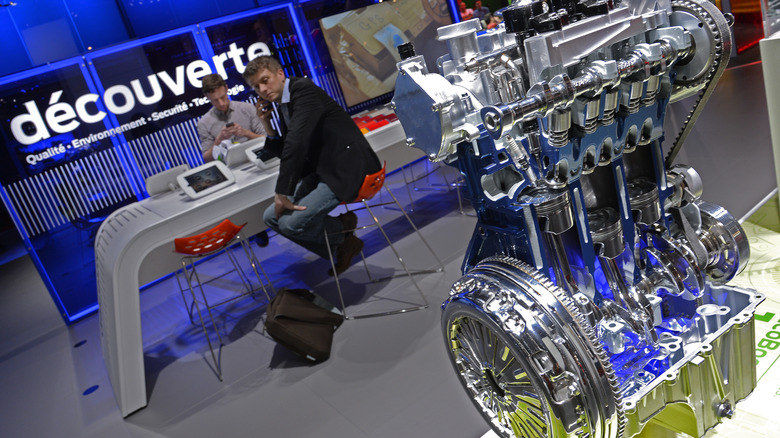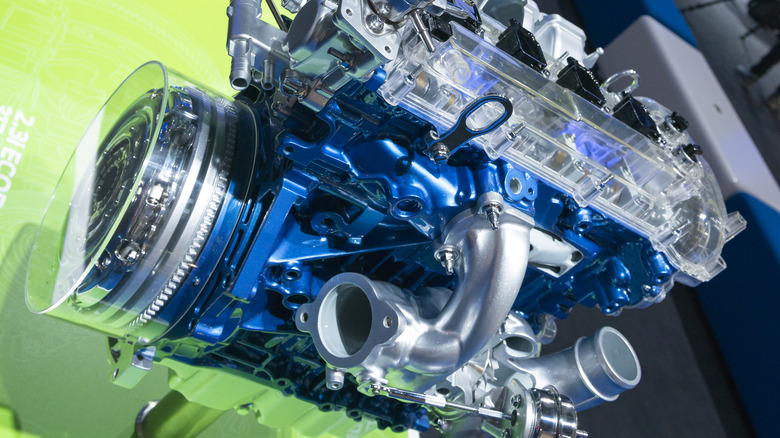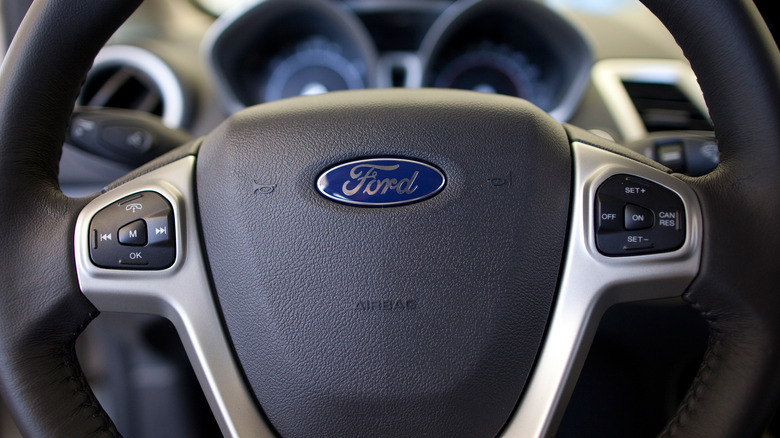Ford's Most Ambitious Engine Was Also One Of Its Biggest Disasters
In 1888, Henry Ford tinkered with the soon-to-be Model T's internal combustion engine in his own home. In 2022, the Ford we know today's revenue stood at more than $158 billion. Of course, an awful lot has happened for Ford in the years between, and the company continues to experiment — with successes and failures — to this day. The EcoBoost 1.0L engine, curiously, proved to be a little bit of both, as it couldn't quite live up to the lofty aims it was designed for.
In a 2008 press release, Ford laid out the intent behind the EcoBoost engine series for its various economy cars in the automaker's lineup — and, at the time, Lincoln and Mercury vehicles. The concept was to utilize direct injection and turbo to offset the potential disadvantages of a downsized engine, while also making vehicles friendlier to both the environment and drivers' bank balances. It was certainly a tall order.
The EcoBoost engine concept
In that same 2008 press release, Ford claimed that its first EcoBoost engine — a V-6 turbocharged 3.5L that was first rolled out in the Lincoln MKS — would offer "an approximate 2 mpg improvement and emit ... up to 15 percent fewer CO2 emissions to the environment." In addition to a claimed 20% increase in fuel economy, Ford promised a lot with the EcoBoost family.
As the line developed, the hope was to convert these advantages into even smaller packages. The diminutive EcoBoost 1.0L, in fact, made its debut at the Beijing Auto Show back in 2010. The engine implemented the Ti-VCT, turbocharge, and other boons of EcoBoost into Ford's dinkiest engine, and it was a bold move. This ambitious little engine, sadly, proved to be quite the liability in some instances — and potentially very dangerous.
This isn't to say that the EcoBoost 1.0L wasn't a successful engine. In May 2019, its International Engine and Powertrain of the Year (Sub-150 PS category) award was the 11th such accolade the EcoBoost engines acquired in its seven years on the market. The awards' co-chairman, Dean Slavnich, went as far as to deem the engine "one of the finest examples of powertrain engineering," after it scooped the award three years running.
Practicality and performance at a 1.6L level is impressive indeed, but it took a dangerous toll in some cases.
What went wrong with the EcoBoost 1.0L?
In 2014, Ford replaced the engine's coolant hose, as earlier models could leak coolant with the driver receiving no external warning. The fuel injection, an important factor in the engine's above-its-weight performance — 6,000 rpm and 125 horsepower in its 2020 iteration — could also be a problematic component, as it didn't allow for natural cleaning of valves and could also contribute to potential breakdowns. Head gaskets could also be damaged, particularly as the engine racked up the mileage, though it's particularly rare in comparison.
In March 2015, the coolant issue was deemed so severe that a Field Service Action — an in-house investigation by Ford covering some 44,682 EcoBoost 1.0L vehicles — was initiated. In October 2018, the BBC quoted a Ford statement as noting, "With any future cases, subject to being assessed and linked to potential 1.0-litre engine overheating, we will contribute 100% of the cost of repair at a Ford dealer."
The EcoBoost 1.0L was ultimately a troubled, yet ambitious creation, powering some of Ford's most popular vehicles such as the Mondeo and Fiesta. The EcoBoost family as a whole has been quite the achievement in its lifetime.


